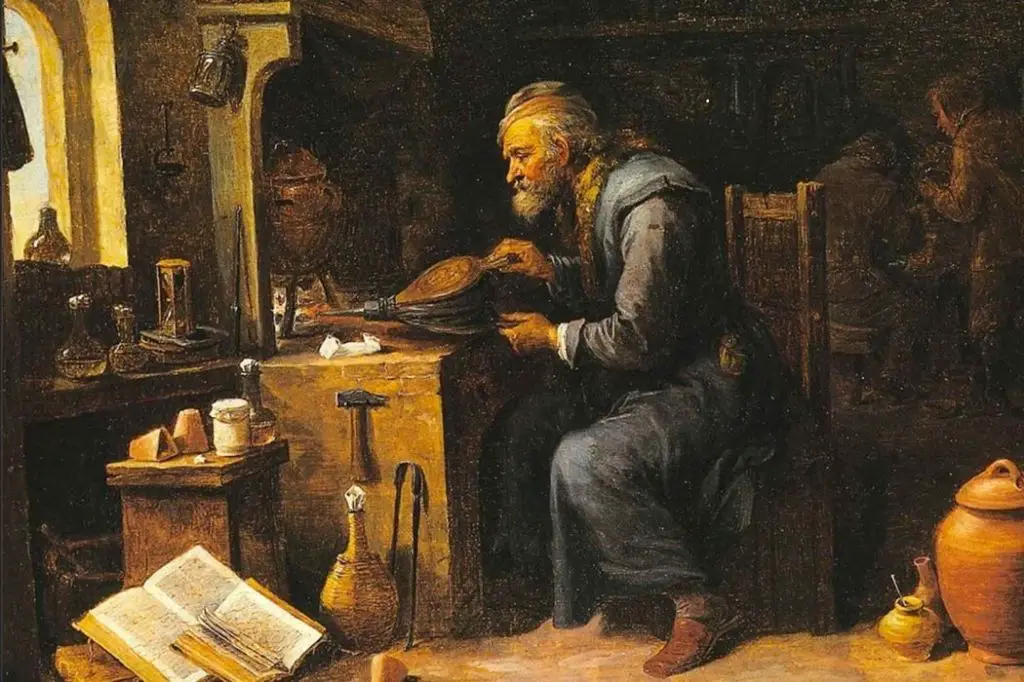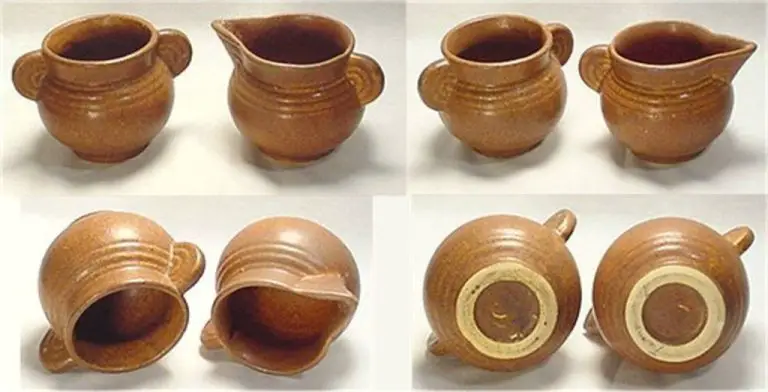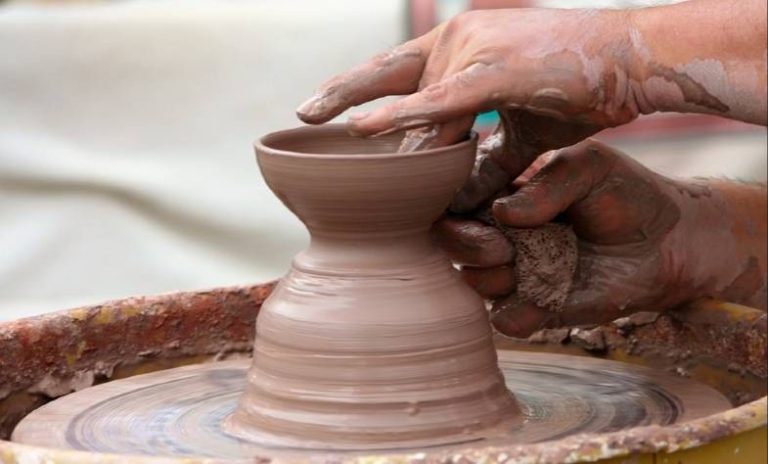How Do You Make Clay In Alchemy?
Alchemy is an ancient practice focused on transforming base metals into gold or silver through the Philosopher’s Stone. It was developed in antiquity and practiced throughout Europe, Egypt, and Asia. The goals of alchemy went beyond economic gain and included discovering cures for disease and ways to extend life.
The earliest records of alchemy trace back to ancient Egypt, Greece, and China around 300-400 BCE. The term “alchemy” derives from the Arabic word “al-kīmiyā'” which means “the (black) earth.” The 14th century BCE Egyptian text known as the “Stockholm papyrus” may be one of the oldest known writings describing alchemical recipes (Encyclopedia Britannica). Through the Middle Ages and Renaissance, alchemy spread through Arabic lands to Europe. Alchemists like Isaac Newton, Robert Boyle, and Paracelsus spent their lives searching for the Philosopher’s Stone and the Emerald Tablet, said to unlock the secrets of transmutation.
The main goals of alchemy were transforming base metals into precious metals like gold or silver, creating an elixir of immortality, and devising cures for diseases. However, alchemy also had a spiritual dimension as alchemists believed they could purify and perfect their souls through their work (Encyclopedia Britannica). While alchemy transitioned into modern chemistry, its influences can still be seen through its rich symbolism and esoteric philosophies.
Understanding the Elements
In alchemy, there are four classical elements that are believed to comprise all matter: air, earth, fire and water. These elements represent different properties and principles (Alchemy Symbols and Their Meanings | Art & Object). The earth element is particularly significant in alchemy and is symbolized by a downward pointing triangle or an inverted triangle. It represents stability, grounding, and the physical world.
The element of earth is vitally important in alchemical processes. Earth contains the raw materials and resources needed for transmutation and creation. Clay, in particular, carries great symbolic meaning, representing primordial matter from which new forms and objects can be manifested. Clay’s malleability connects to the idea of shaping base materials into more refined ones, which is central to alchemy. The alchemical significance of clay is tied to its potential for transformation and creation.
Overall, the classical element of earth represents the basic components and materials required for alchemical work. Clay’s flexibility and creative possibilities make it an essential representation of the element of earth in the alchemical tradition.
The Principles of Alchemy
Alchemy is guided by a set of core principles that provide the theoretical framework for transmutation. The most important principle is the law of equivalence, which states that something cannot be created from nothing. Instead, one substance can only be transformed into another if it already contains the essence of that other substance.
This leads to the theory of transmutation, which proposes that base metals can be turned into precious metals like gold through alchemical procedures. The transmutation is possible because metals are believed to contain traces of other metals within them. By purifying and perfecting these traces, the alchemists aim to bring forth the hidden essence.
The ultimate goal of alchemical transmutation is to produce the Magnum Opus or the “Great Work.” This is the process of working with primal matter to achieve a perfect balance of its three essential principles – salt, sulfur, and mercury. The Magnum Opus is a lengthy, cyclical procedure of solving, separating, and recombining matter in pursuit of the Philosopher’s Stone and transmutation.
Sources:
https://www.songofstones.com/blogs/metaphysical/the-three-principles-of-alchemy
Obtaining the Ingredients
The key ingredients needed to make alchemical clay are clay, water, and earth. Each ingredient carries important symbolic meaning in the alchemical tradition.
Clay represents the primal matter from which all things are created. Alchemists believed that clay contained the basic elements needed to produce gold, the ultimate goal of alchemy. The texture and malleability of clay also symbolized the alchemist’s ability to shape base materials into more valuable substances.
Water represents the life force and purity required for alchemical transformations. Alchemists used water to mix with clay to provide the fluid energy needed for reactions. Water also cleaned the clay and brought it to a primal state before reshaping it through alchemy.
Earth represents the elemental roots and foundations for alchemical work. Earth grounds the clay and provides stability during alchemical processes. Alchemists gathered clay directly from the earth, believing it already contained the fundamental components present within the planet itself.
https://www.ign.com/wikis/the-elder-scrolls-5-skyrim/Alchemy_Ingredients

Obtaining high quality ingredients was an important first step in alchemical work. The purity and energetic properties of the clay, water, and earth determined the success of transmuting the clay into higher forms.
Preparing the Clay
The first step in preparing alchemical clay is to obtain high quality clay that is free of impurities. According to research, the best clays for alchemy come from ancient river beds or mountain regions untouched by pollution.
Once an appropriate clay source is identified, the clay must be properly processed and purified. This involves extracting raw clay from the earth and removing any rocks, roots, or other debris. The clay is then slaked or mixed with water to create a wet clay slurry.
According to sources, the clay slurry should be left to settle so heavier particles sink to the bottom. The purified wet clay can then be decanted off the top. This settling process may need to be repeated several times to fully purify the clay.
After obtaining purified wet clay, the next step is drying it fully. The clay must be completely moisture-free before proceeding. Dried clay is then ground into a fine powder using a mortar and pestle or mechanical grinder. According to alchemical texts, the clay must be reduced to the finest powder possible, with no remaining grit or chunks.
Once the purified clay powder is prepared, it is ready for the transmutation processes of alchemy. Proper processing and grinding ensures the clay is in an optimal state for absorbing and conducting the alchemical energies needed for transmutation.
The Alchemical Process
The alchemical process known as the “magnum opus” or Great Work involves a series of steps using heat and specialized equipment to gradually transform base metals into more valuable substances like gold or the philosopher’s stone. According to alchemical texts, the key steps are:
- Calcination: Heating the base metal at high temperatures to reduce it to a powdery ash or calx form. This represents purification and breaking down of the material.
- Dissolution: Dissolving the ash in liquid to further purify it. Solutions like hydrochloric acid or aqua regia were often used.
- Separation: Separating out the subtle essences from the liquid solvent through filtration or distillation. The soluble and insoluble aspects are divided.
- Conjunction: Reuniting the saved essences and spirit of the metal into a new purified and exalted substance.
- Fermentation: Allowing the new substance to further mature through gentle heating over weeks or months. The material develops to completion.
- Distillation: Heating the fermented substance in an alembic still. The vaporized spirit rises up through the condenser, leaving behind the finished product.
The key equipment needed includes crucibles for calcination, flasks and cucurbits for dissolving and distilling, and a furnace or fire pit to provide steady heat. Alchemists also used specialized tools like the Pelican, a glass vessel with arms that was used to circulate solutions.
Through manipulating these materials and processes, alchemists sought to induce transmutation of the metals into more perfect forms like gold. However, the external procedures aimed to create inner spiritual transformation and wisdom in the alchemist themselves.
Symbolic Meaning
The process of creating alchemical clay carried deep symbolic meaning for alchemists. The clay represented the prima materia, or primal formless matter, which alchemists believed could be purified and transformed into more divine substances (Sheppard, 1958). By working with the clay, alchemists aimed to purify themselves and attain spiritual perfection.
Many alchemical texts use the metaphor of the alchemist as a hen incubating an egg to describe the alchemical process. The egg represents the clay or prima materia containing the nascent Philosopher’s Stone. Through adding reagents and applying heat, the alchemist “hatches” this egg to produce the Stone, symbolic of attaining enlightenment or spiritual rebirth (Animal Symbolism in Alchemy).
The dark color of the initial clay represents the alchemist’s flawed, impure state. As purification progresses, the clay lightens, symbolizing the alchemist achieving a more perfected soul. References to whitening of the dark clay abound in alchemical writings. The pure white color at the end signifies perfection of body, mind and soul.
Safety Precautions
Alchemy experiments can potentially be dangerous, so it is absolutely vital to take proper safety precautions. As the old alchemists used to say, “Haste makes waste.” Rushing through experiments without care can lead to injury or damage.
Some key precautions include:
- Wear protective equipment like goggles, gloves, aprons, and masks to avoid direct contact with skin and eyes.
- Work in a well-ventilated area to avoid breathing in harmful fumes. Fume hoods or outdoor areas are ideal.
- Keep a fire extinguisher on hand. Flammable substances are commonly used in alchemy.
- Use heat sources carefully. Open flames, hot plates, and other heat sources can ignite materials or cause burns.
- Add acids to water slowly and carefully. Always add acid to water, not the other way around, to prevent violent reactions.
- Clean equipment thoroughly after each use to prevent contamination or unsafe combinations of chemicals.
- Label all containers clearly with contents and hazards.
- Dispose of waste properly. Many alchemical ingredients can be hazardous if poured down drains.
With the right precautions, alchemy experiments can be conducted safely. But never forget that many alchemical substances are inherently dangerous. As the medieval alchemist Geber once wisely cautioned, “You must not run risks, but be cautious.”
Modern Applications
While alchemy originated as a mystical practice aimed at transforming matter, it laid the groundwork for modern chemistry and metallurgy. Many key discoveries in metallurgy that led to major technological advancements were first pioneered by alchemists. For example, processes like distillation, sublimation, and the extraction of metals from ores trace their origins to alchemy.
Alchemy also made important contributions to the development of medicines and pharmaceuticals. Alchemists sought the elixir of life and experimented with mineral and plant-based compounds for their healing properties. This empirical approach led to discoveries of many curative ingredients.
There are also links between alchemy and art. Alchemical symbols and principles have inspired many artists, such as the surrealists. Alchemical imagery evokes the magical, transformative quest of the alchemist. Modern glass makers and jewelers also employ alchemical techniques for coloring and working with metals.
While alchemy evolved into modern science, its mystique and wonder continue to inspire creativity and experimentation today. For example, the Modern Alchemy Game Bar incorporates alchemical symbols and aesthetics into its atmosphere.
Conclusion
Creating alchemical clay involves gathering the basic ingredients of earth, water, and fire and subjecting them to the alchemical process of dissolution, coagulation, and fermentation. By skillfully blending these elemental substances and guiding them through the alchemical steps, the alchemist transforms raw materials into a new creation. The resulting alchemical clay serves as the prima materia or primal matter from which further transformations can unfold.
This process of creating clay is fundamental within alchemy, representing the magician’s ability to alter basic matter into more refined substances. Manipulating clay allows the alchemist to understand the primal elements in their purified essences. Mastery over clay intimates mastery over matter itself.
Though alchemy eventually gave way to modern chemistry, its legacy remains vital. Alchemy pioneered experimental science and encouraged an interplay between the spiritual and physical realms. Its emphasis on transforming substances parallels the inner transformation alchemists sought. Though the specifics of alchemical clay creation may no longer be practiced, the philosophical underpinnings still resonate.



